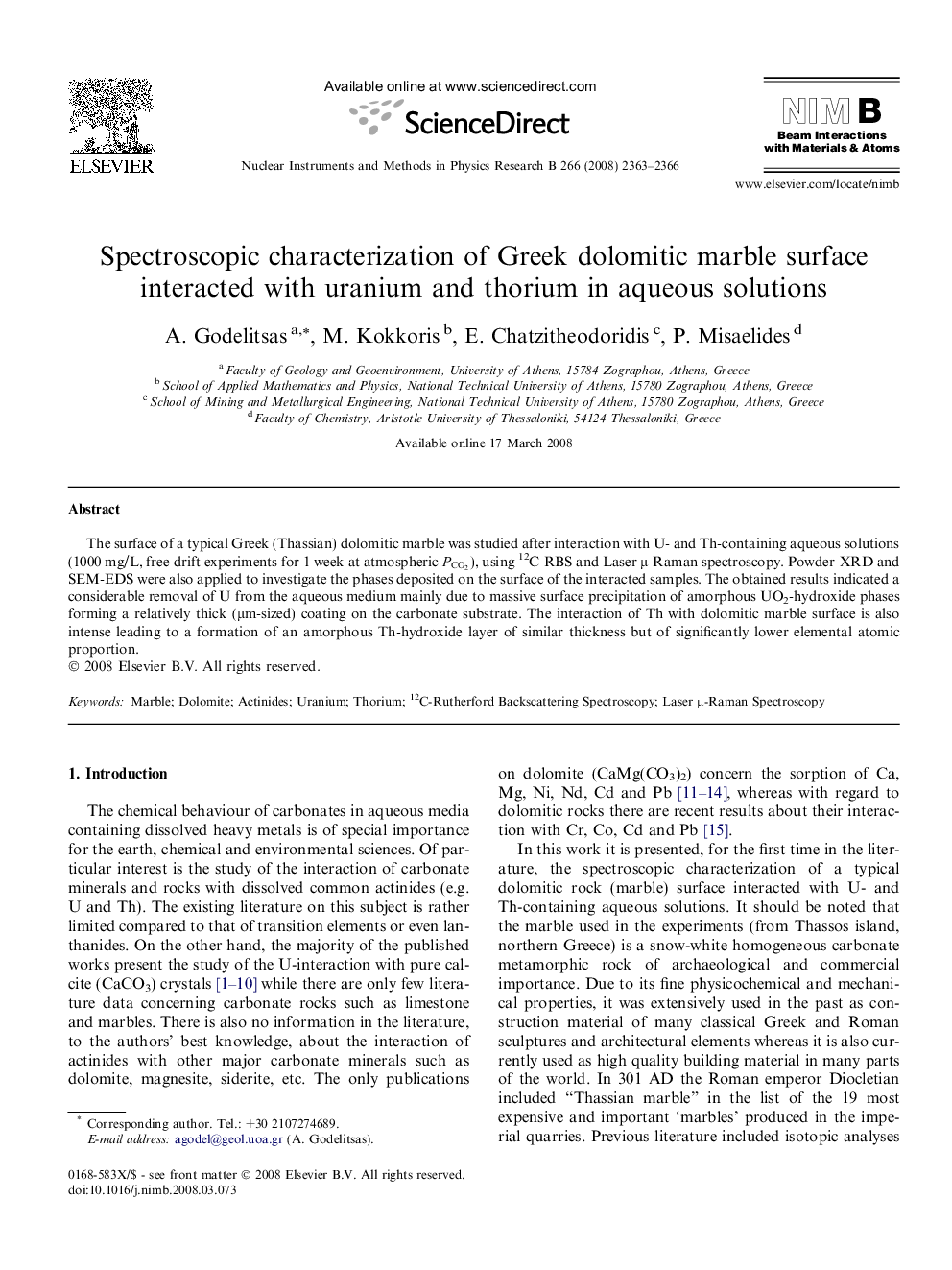| کد مقاله | کد نشریه | سال انتشار | مقاله انگلیسی | نسخه تمام متن |
|---|---|---|---|---|
| 1687610 | 1010670 | 2008 | 4 صفحه PDF | دانلود رایگان |

The surface of a typical Greek (Thassian) dolomitic marble was studied after interaction with U- and Th-containing aqueous solutions (1000 mg/L, free-drift experiments for 1 week at atmospheric PCO2PCO2), using 12C-RBS and Laser μ-Raman spectroscopy. Powder-XRD and SEM-EDS were also applied to investigate the phases deposited on the surface of the interacted samples. The obtained results indicated a considerable removal of U from the aqueous medium mainly due to massive surface precipitation of amorphous UO2-hydroxide phases forming a relatively thick (μm-sized) coating on the carbonate substrate. The interaction of Th with dolomitic marble surface is also intense leading to a formation of an amorphous Th-hydroxide layer of similar thickness but of significantly lower elemental atomic proportion.
Journal: Nuclear Instruments and Methods in Physics Research Section B: Beam Interactions with Materials and Atoms - Volume 266, Issue 10, May 2008, Pages 2363–2366